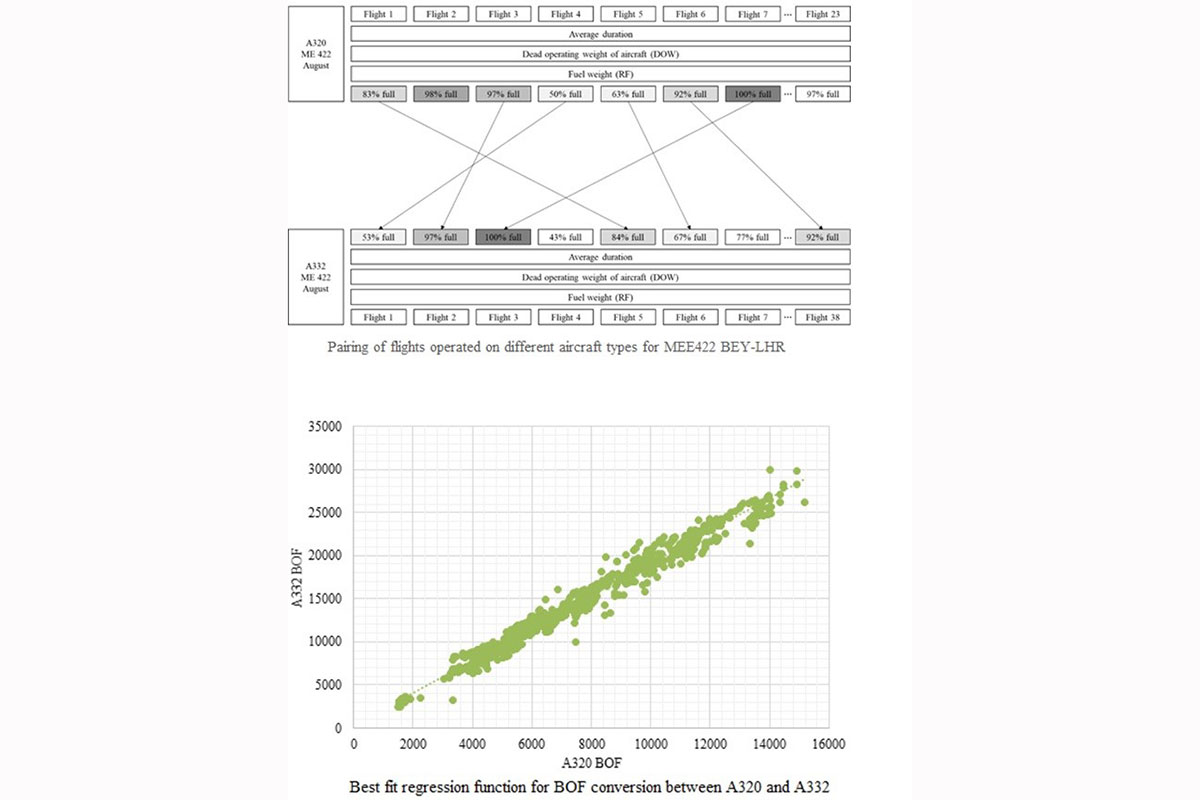Maximizing Environmental Sustainability in Air Transportation through Fleet Utilization Optimization
Project Details
- Student(s): Nicolas Karam and Romy Nehme
- Advisor(s): Dr. Pierrette Zouein
- Department: Industrial & Mechanical
- Academic Year(s): 2020-2021
Abstract
This project investigates a novel approach aimed at maximizing environmental sustainability in air transportation by optimizing fleet utilization. At its core, the Fleet Assignment Problem (FAP) entails efficiently allocating aircraft from a fleet mix to scheduled flight legs. Extending this problem further, the Integrated Fleet Assignment Problem (IFAP) integrates the FAP with other airline processes, attracting considerable attention in recent literature. Notably, there has been a concerted effort towards developing eco-friendly solutions to curb carbon emissions, exploring diverse mitigation strategies such as aircraft design modifications, alternative fuels, policy implementations, and operational enhancements. Specifically, our project focuses on optimizing the utilization of an existing fleet mix to curtail fuel consumption and mitigate CO2 emissions. Coined the Emissions Integrated Fleet Assignment Problem (EIFAP), we develop a mixed integer linear program (MILP) framework to seek precise solutions to this problem. Unlike previous models surveyed, the proposed model incorporates important factors influencing fuel burn, including flight plans and components of takeoff weight, which were previously overlooked. Diverging from existing methodologies reliant on stage length for fuel burn estimates, the proposed model computes fuel consumption per aircraft-leg pair based on flight duration and aircraft takeoff weight. The takeoff weight encompasses not only dead weight and payload weight but also the weight of block fuel carried, facilitating a more accurate estimation of fuel burned across various aircraft-leg assignments. The key contribution of the proposed model lies in its simplicity and its ability to capture essential factors using fewer parameters, such as the product of flight duration with takeoff weight. These factors encapsulate leg-specific characteristics like wind corridors along the flight path, flight plan intricacies, and airline fueling practices, all of which impact fuel consumption. Through a case study utilizing data from a local airline, we demonstrate the real-world applicability of the model and its potential for scenario analysis. Our findings underscore the efficacy of optimizing fleet assignment to minimize fuel consumption while shedding light on the intricate relationship between route yield, stage length, and optimal aircraft size. Overall, our approach offers a promising avenue for enhancing environmental sustainability in air transportation through fleet utilization optimization.
